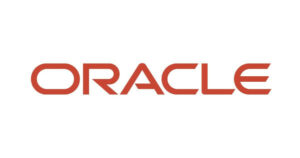
Ethereum stands at the forefront of decentralized finance (DeFi), a sector that has grown exponentially over the past few years. As Ethereum continues to evolve through its various upgrades, understanding the implications for DeFi is crucial for businesses and potential clients looking to engage with Ethereum development services. This blog will delve into the upcoming upgrades, particularly the anticipated Pectra upgrade, and explore their potential effects on DeFi.
Understanding Ethereum’s Current Landscape
Ethereum is a decentralized platform that enables developers to build and deploy smart contracts and decentralized applications (DApps). The network operates on a blockchain, which ensures transparency and security for transactions. Over time, Ethereum has faced challenges such as high transaction fees and scalability issues, which have hindered its performance in the DeFi space.
Key Features of Ethereum
Smart Contracts: Smart contracts are self-executing contracts with the terms of the agreement directly written into code. They facilitate, verify, or enforce the negotiation or performance of a contract without intermediaries. This feature is fundamental to DeFi, allowing for automated processes such as lending, borrowing, and trading.
DApps: Decentralized applications operate on a blockchain network rather than being hosted on centralized servers. This decentralization means they are less susceptible to downtime or censorship, providing users with more control over their assets and interactions.
Token Standards: Ethereum has established several token standards that facilitate the creation of digital assets. ERC-20 tokens are fungible and widely used for creating cryptocurrencies and utility tokens, while ERC-721 tokens are non-fungible tokens (NFTs) that represent unique digital items. These standards have enabled a vibrant ecosystem of projects within DeFi.
The Role of Upgrades in Ethereum’s Evolution
Ethereum’s upgrades are designed to improve its functionality, scalability, and user experience. The most significant upcoming upgrade is the Pectra upgrade, scheduled for March 2025. This upgrade aims to address several critical issues currently facing the network.
Pectra Upgrade Overview
The Pectra upgrade combines multiple Ethereum Improvement Proposals (EIPs) into a cohesive package aimed at enhancing various aspects of the network. Key proposals within this upgrade include:
1. EIP-3074: This proposal introduces grouped transactions, allowing users to bundle multiple tasks into a single transaction. For example, users could execute a trade while simultaneously providing liquidity to a pool in one go. This change is expected to streamline user interactions and reduce gas fees significantly. By minimizing the number of transactions needed for complex operations, EIP-3074 can help users save both time and money.
2. EIP-7251: This proposal increases the maximum amount of ETH that validators can stake from 32 ETH to 2,048 ETH, simplifying the staking process and improving efficiency. With this increase, larger entities can participate more easily in securing the network, leading to greater decentralization and security overall. Additionally, this change may attract institutional investors who are looking for ways to stake larger amounts without needing multiple validator nodes.
3. Account Abstraction: Enhancements to wallet functionality will make it easier for users to manage their assets without complex setups. Account abstraction allows for more flexible wallet designs that can incorporate features like social recovery mechanisms or multi-signature requirements directly into the wallet architecture. This flexibility can cater to various user needs — from casual users who want simplicity to advanced users requiring robust security measures.
These improvements are designed to simplify user interactions while bolstering the network’s operational framework.
Implications for Decentralized Finance (DeFi)
The upcoming upgrades will significantly impact DeFi applications built on Ethereum. Here are some key areas where changes are expected:
1. Lower Transaction Costs
High gas fees have been a major barrier for users engaging with DeFi applications. During periods of high network congestion, transaction costs can skyrocket, making it unfeasible for smaller investors or casual users to participate in activities such as trading or lending. With the introduction of EIP-3074, transaction efficiency is set to improve dramatically.
By allowing grouped transactions, users will not only save on gas fees but also experience faster confirmations as fewer individual transactions need processing by miners or validators. This change will make DeFi more accessible for users who previously found it cost-prohibitive to engage with these platforms.
Moreover, lower transaction costs can lead to increased trading volumes and liquidity across DeFi platforms as more participants enter the space without fear of exorbitant fees eating into their profits.
2. Improved User Experience
The enhancements in wallet functionality through account abstraction will simplify how users interact with DeFi platforms. Users will no longer need extensive knowledge of private keys or complex recovery processes; instead, they can utilize more intuitive interfaces that guide them through their transactions.
For example, social recovery options allow users to designate trusted contacts who can help recover access to their wallets if they lose their credentials. This improvement addresses one of the significant pain points in DeFi — where lost keys can lead to permanent loss of funds — and encourages broader adoption among less tech-savvy individuals.
Additionally, simplified onboarding processes will enable new users to start participating in DeFi activities quickly without needing extensive tutorials or guides.
3. Enhanced Security Features
Security remains a paramount concern in DeFi due to incidents involving hacks and scams that have resulted in significant losses for users. With features like social recovery for wallets being introduced as part of account abstraction, users can regain access to their assets more easily if they lose their credentials.
Furthermore, as validators increase their staking limits under EIP-7251, this could lead to a more robust validation process overall. A greater number of validators means enhanced security through decentralization — reducing single points of failure that could be exploited by malicious actors.
Security audits will also become increasingly important as new features roll out; businesses should prioritize working with reputable firms that specialize in smart contract audits to ensure their applications remain secure against emerging threats.
4. Increased Scalability
As Ethereum transitions towards more scalable solutions through upgrades like Pectra, it can handle a higher volume of transactions simultaneously without compromising performance or security. Scalability is crucial for DeFi protocols that experience high traffic during market fluctuations; if networks cannot keep up with demand, users may face delays or failed transactions.
With improved scalability measures in place post-upgrade, we can expect smoother operation during peak times — allowing traders and liquidity providers to execute transactions quickly and efficiently without worrying about network congestion impacting their activities.
The Future of Layer 2 Solutions
In addition to core upgrades like Pectra, Layer 2 solutions play a vital role in enhancing Ethereum’s capabilities by enabling faster processing times and lower fees while maintaining security through connection back to the mainnet.
Layer 2 solutions such as Optimistic Rollups and zk-Rollups allow transactions to be processed off-chain before being settled on the mainnet. This significantly reduces costs and increases speed while still ensuring that all transactions remain secure due to periodic settlements back onto Ethereum’s main chain.
Benefits of Layer 2 Solutions:
Reduced Gas Fees: By processing transactions off-chain, Layer 2 solutions alleviate congestion on the mainnet during busy periods when gas prices tend to spike.
Faster Transactions: Users can expect quicker transaction confirmations — critical for trading activities where timing can greatly affect profitability.
Increased Capacity: Layer 2 solutions enable Ethereum’s infrastructure to handle more transactions without compromising security or decentralization principles inherent within its design philosophy.
As these technologies mature alongside Ethereum’s upgrades like Pectra scheduled for March 2025 onward — adoption rates among developers building DApps will likely increase substantially due not only improved performance but also enhanced user experiences across various applications within DeFi ecosystems.
Preparing for Change: What Businesses Should Do
Businesses looking to engage with Ethereum development should consider several strategies as these upgrades roll out:
1. Stay Informed: Keeping abreast of Ethereum’s upgrade timeline and features will help businesses adapt their strategies accordingly. Regularly following reputable sources such as developer blogs or community forums dedicated specifically towards updates regarding EIPs can provide valuable insights into what changes may be coming next — and how they might impact existing projects already built upon this blockchain technology stack.
2. Invest in Development: Companies should invest in developing applications that leverage new features introduced by upgrades like Pectra — such as utilizing grouped transactions within their platforms’ architecture — to maximize efficiency gains while minimizing costs associated with traditional transaction methods currently employed today across many existing protocols operating within this space today!
3. Engage with Experts: Collaborating with experienced Ethereum development companies can provide valuable insights and technical expertise tailored specifically towards navigating complexities involved when building upon cutting-edge technologies emerging from ongoing developments taking place across this rapidly evolving landscape!
4. Focus on User Education: As new features roll out aimed at improving user experience within decentralized finance ecosystems — it’s essential businesses prioritize educating potential customers about how these innovations work! Providing comprehensive guides alongside intuitive interfaces designed around ease-of-use principles will help foster trust among end-users who may otherwise feel intimidated navigating unfamiliar territory surrounding blockchain technologies!
5. Conduct Thorough Security Audits: With increased complexity comes heightened risk; therefore conducting regular audits ensures vulnerabilities are identified early before they become exploited by malicious actors seeking gain at expense unsuspecting individuals using these platforms daily!
Conclusion
The upcoming Pectra upgrade and ongoing improvements within the Ethereum ecosystem present exciting opportunities for businesses involved in DeFi operations. By addressing key challenges such as high gas fees along with user experience barriers these changes are set not only foster greater participation but also drive innovation forward across various sectors reliant upon decentralized finance solutions offered today.
For businesses looking capitalize on these advancements while developing innovative solutions utilizing all capabilities provided through Ethereum — engaging experienced developers remains essential. At Codezeros we offer comprehensive Ethereum development services tailored specifically meet your unique needs amidst this evolving landscape.
If you’re ready explore how your business can thrive within decentralized finance space powered by cutting-edge advancements occurring throughout ecosystem reach out Codezeros today.
The Impact of Ethereum’s Upgrades on DeFi: What to Expect in the Coming Months was originally published in Magnetic Newsletter Pro on Medium, where people are continuing the conversation by highlighting and responding to this story.








